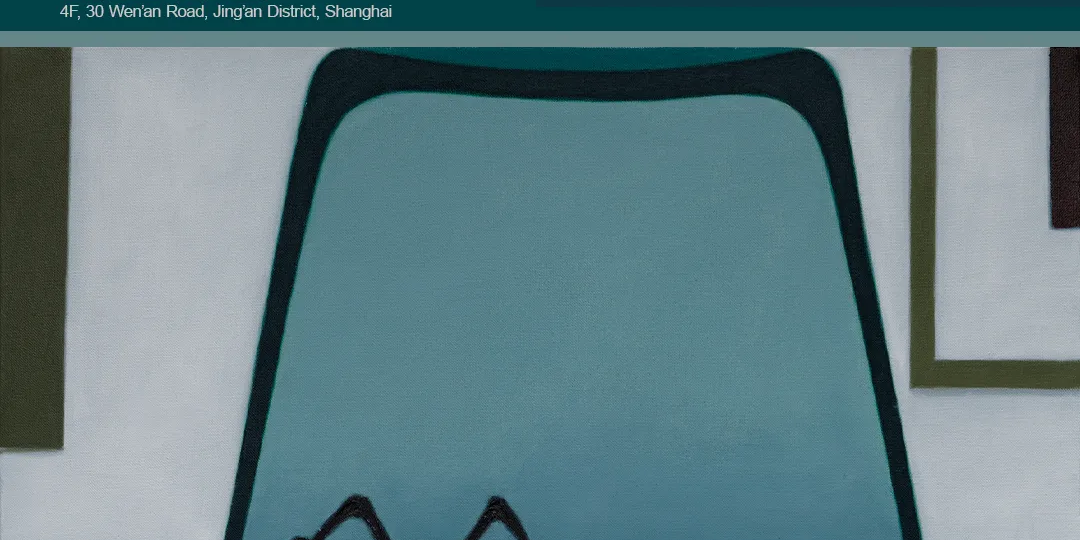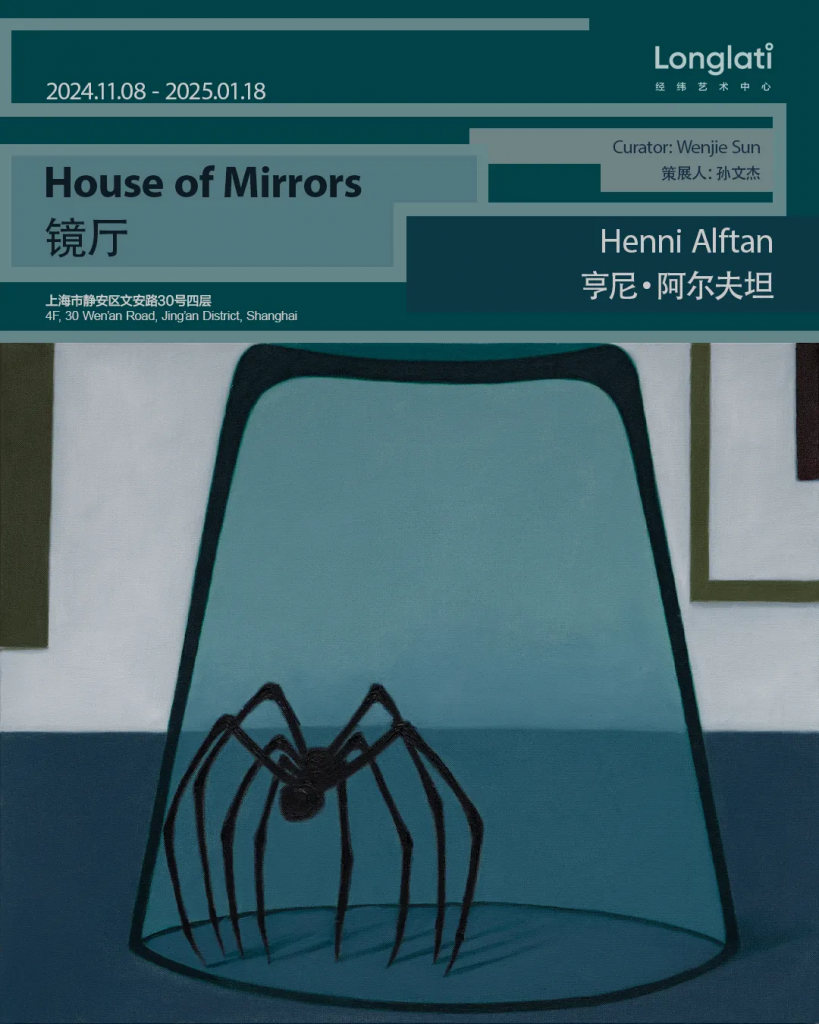
Henni Alftan’s solo exhibition at Longlati Foundation, “House of Mirrors,” invites the viewer to a world where the boundaries between image and representation blur. Curated by Sun Wenjie, the exhibition comprises seventeen mostly recent works on canvas, her largest solo exhibition in Asia to date.
Alftan’s works stand at the intersection of observation and imagination, where the body becomes a signifier, the gesture acts as a symbol, and the spectator and the artwork collaborate to engender more than what meets the eye. Like a tableau vivant—an art form in which the performer remains motionless in fixed positions, presenting a still scene—Alftan’s works rcapture frozen gestures, poses, and scenes, rendering them alternately tranquil and tense.
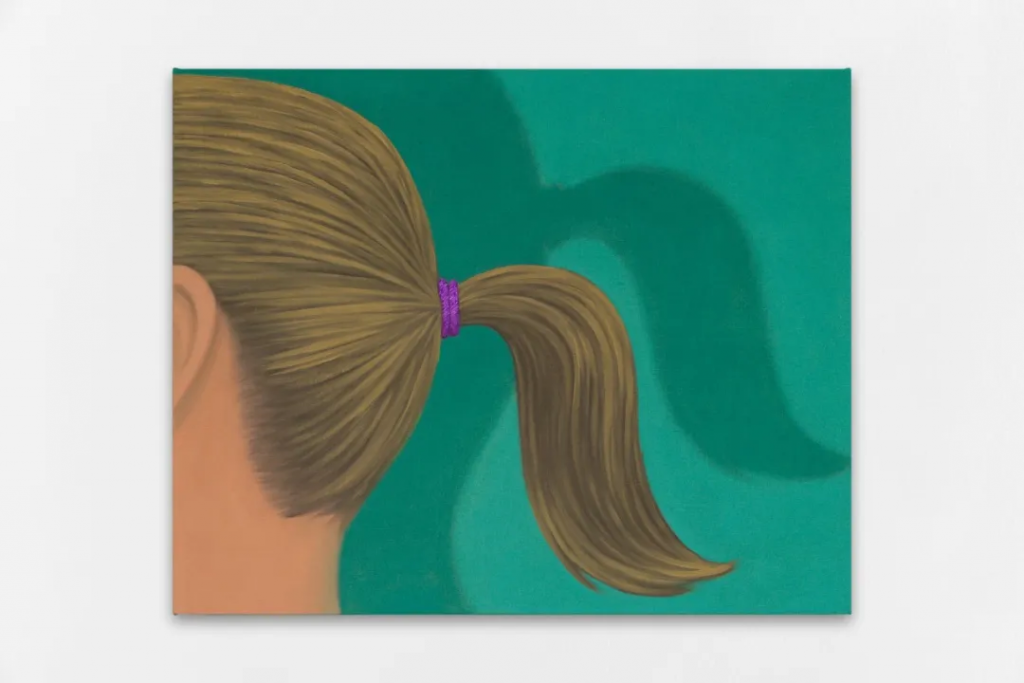
Henni Alftan, Ponytail, 2024, oil on linen, 65 x 81 cm. Courtesy the artist and KARMA
Inspired by the precise illustrations in instruction manuals, Alftan often takes hand gestures as subjects. Movements of the hands are both functional and expressive in person-to-person communication. In Alftan’s work, hand gestures are stripped of their identifying characteristics and transformed into pure forms and compelling symbols, conveying rich meanings without revealing their context. This approach coincides with Ferdinand de Saussure’s semiotic theory, in which the gesture serves as the “signifier” (the material form of the sign), while the emotions and interpretations it evokes are the “signified” (what the sign represents).
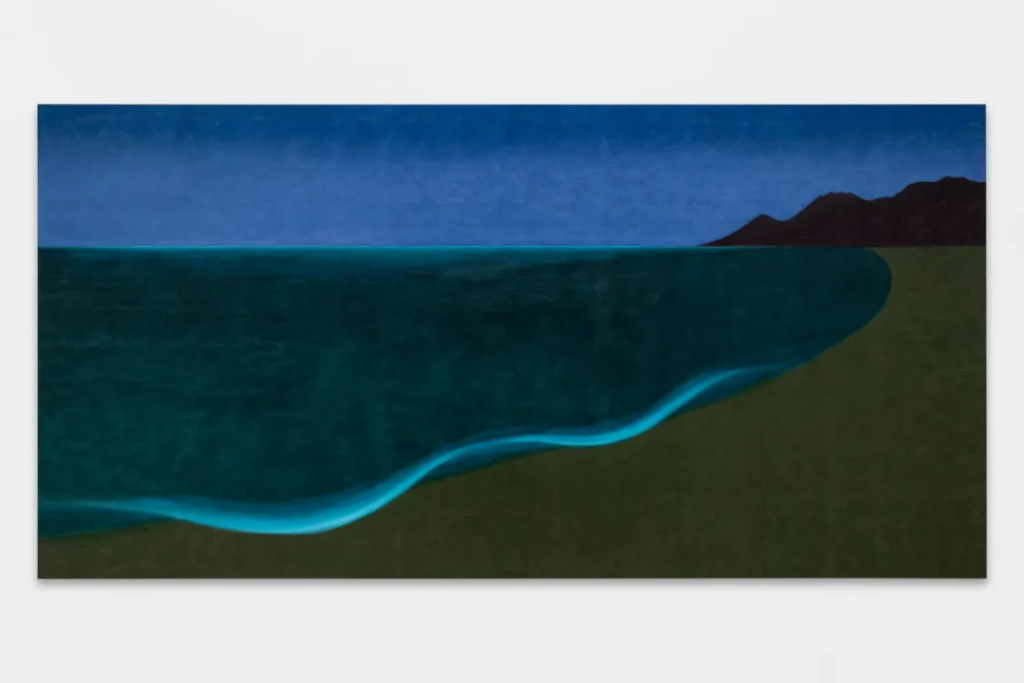
Henni Alftan, The Bay (Night), 2024, oil on linen, 150 x 300 cm. Courtesy the artist and KARMA
In addition to the hand, the artist revisits motifs such as the starry sky, windows, neon signs, cups, lips, and stairs. The self-portrait Ponytail (2024) is a re-take of an earlier work that played on the titular hairstyle’s resemblance to a paintbrush. Here, Alftan magnifies a detail of her previous painting into a new, intimate reflection. The artist is not merely reproducing objects from the physical world but is capturing the appearance of the world and the complexity behind it. In her view, the work on canvas and the image often imitates each other. As the artist has said: “My images are not new. I did not really invent them. It is as if they were already there.” Alftan simply captures them with precision, and the painted medium becomes a site onto which she responds to “the visible world and its manifestations.”
The triptych A Conversation (In-between) (2024) extends Alftan’s adoption of blank space between images, a technique she has applied in several of her previous diptychs. Two figures in the composition are incomplete; their faces are concealed, highlighting instead the hand gestures in their implied conversation. The spectator has to mentally complete the scene in order to deepen their understanding of what is depicted on the canvas.
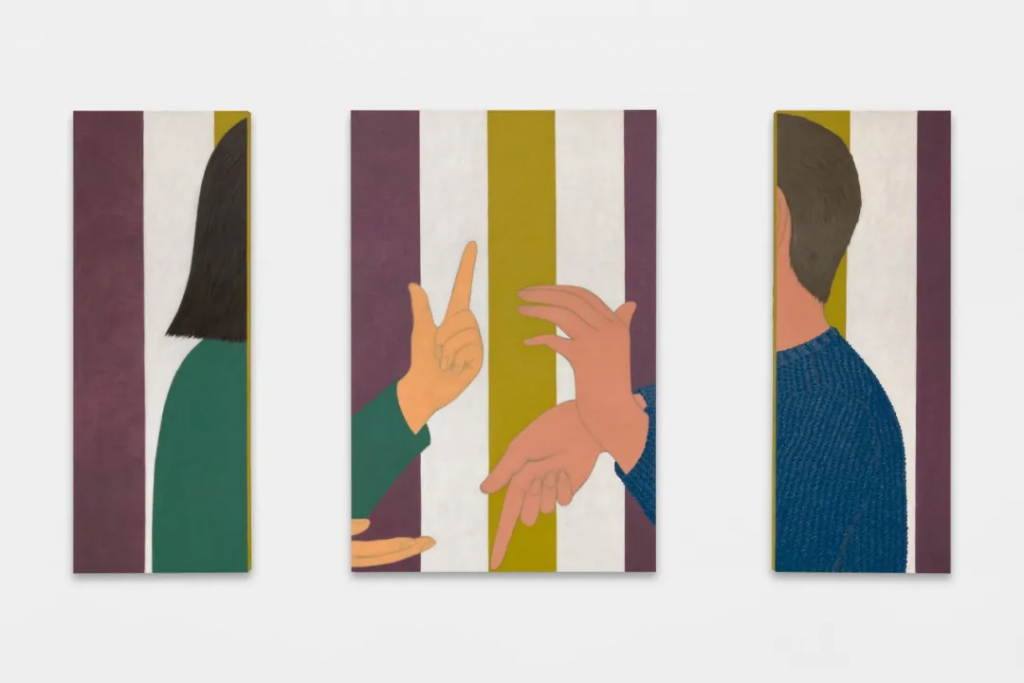
Henni Alftan, A Conversation (In-between), 2024, oil on linen, in three parts, 146 x 276.5 cm. Cour-tesy the artist and KARMA
“House of Mirrors” is a spatial installation consisting of surrounding mirrors, reminiscent of an amusement park funhouse where reality is reflected through distortion. Alftan takes such a spatial structure out of its carnival context and invites the viewer to participate in activating and generating a depicted scene. “House of Mirrors” resonates with André Gide’s notion of the mise en abyme, a literary theory on intertextuality that addresses the relationship between the meta-medium and the signifier, through which the creator, the work of art, and the spectator are tied together. From a visual perspective, “House of Mirrors” also evokes the famous scene of the “mirror maze” in the 1973 martial arts movie Enter the Dragon, where opponents go in and out of the mirror-filled space. Even if there was only one person, the image in the mirror always resembles a tango.
As light pours into the exhibition hall through windows looking out on the Suzhou River, the “House of Mirrors” and the city interact. Stepping into the exhibition space and facing the forked entrances, the spectator must walk the path they choose. A beach at night, windows flooded with red city lights, and a starry sky glittering outside await them. Alftan has brought a series of nighttime scene to Shanghai that resonate with a suite of daytime works that will be on view concurrently at Karma in New York. The two exhibitions are themselves mirrored, echoing each other from across the globe.
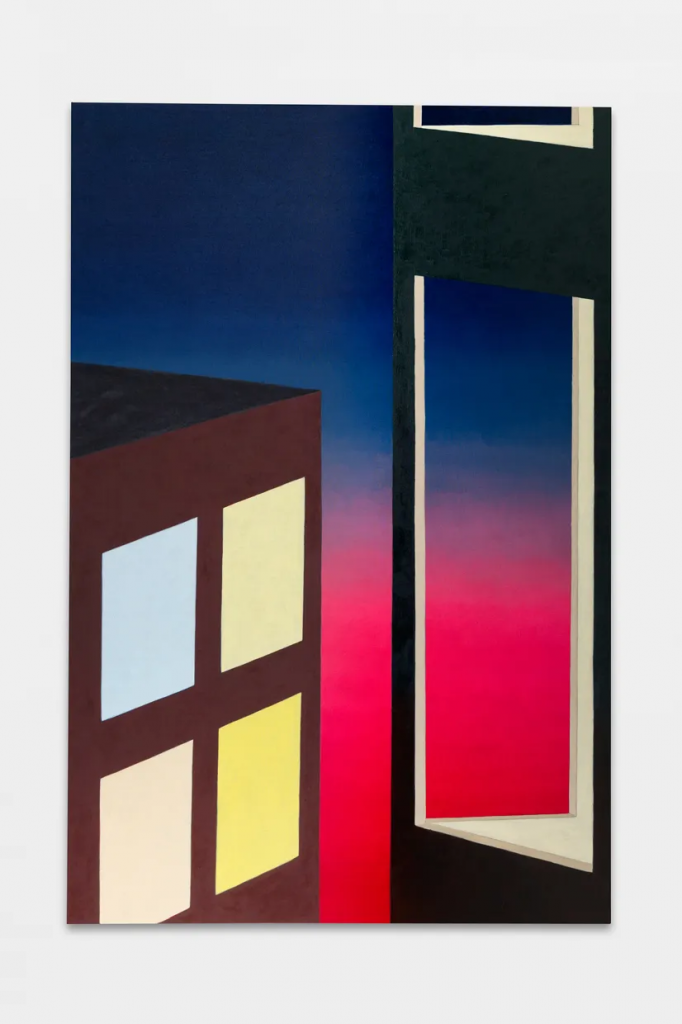
Henni Alftan, Red Sky, 2024, oil on linen, 195 x 130 cm. Courtesy the artist and KARMA
About the Artist
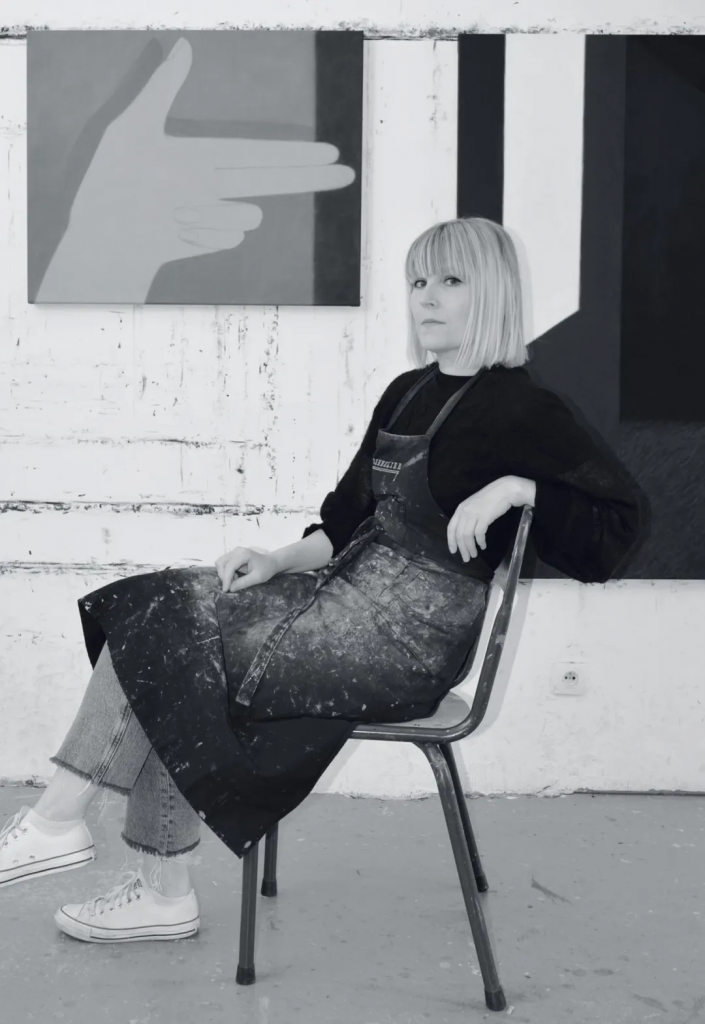
Henni Alftan. Courtesy the artist and KARMA
Henni Alftan (b. 1979, Helsinki, Finland) is a Paris-based painter who creates pictures based on a complex process of observation and deduction. Working in figuration but rejecting a narrative dimension, Alftan’s compositions use the tight framing of close-range photography to explore the similarities between painting and image-making. “I paint pictures,” Alftan says, and “painting and picture often imitate each other.” Inviting viewers to consider the history, materiality, and objecthood of painting, Alftan’s vignettes represent a fragmented vision of the real and address pictorial issues such as color, surface, flatness, depth, pattern, texture, and framing devices.
Recent solo exhibitions include Karma, Los Angeles (2023); Sprüth Magers, London (2022); Karma, New York (2020); Studiolo, Milan (2019); and TM-Galleria, Helsinki (2018). Her work is represented in the collections of the Amos Rex Art Museum, Helsinki; Dallas Museum of Art; EMMA – Espoo Museum of Modern Art, Espoo, Finland; Hammer Museum, Los Angeles; Helsinki Art Museum; High Museum of Art, Atlanta; Institute of Contemporary Art, Miami; Kuntsi Museum of Modern Art, Vaasa, Finland; Los Angeles County Museum of Art; and the UBS Art Collection, among others.
